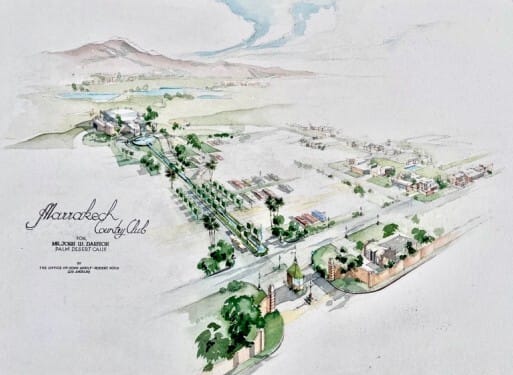The Palm Desert City Council formally designated Marrakesh Country Club as a historic district recently, recognizing the 155-acre development's mid-century architecture and landscape design.
The designation covers the guardhouse, administrative building, clubhouse, golf course, common areas and all residential condominium parcels within the complex. Bobby Keatinge, associate planner with the city’s Development Services Department, said staff found the property eligible under five of seven criteria in the city’s Municipal Code.
The development was built between 1967 and 1979 by developer Johnny Dawson with architects John Elgin Wolf and Richard Harrison and golf course architect Ted Robinson. Staff said the property retains its primary character-defining elements despite some later alterations.
Keating told the council that the few inappropriate alterations observed, including some additions and window replacements, "would not be approved today under the HOA's existing architectural standards." He recommended adopting the resolution.
Representatives of Marrakesh described the nomination as the product of a multi-year effort that involved a historian's application and HOA approval. Preservation consultant Steven Price, who served on Marrakesh committees and on local preservation boards, told the council the nomination was unique in its importance because of the district's scale and quality.

The main rendering for Marrakesh Country Club. (Photo: John Elgin Woolf Papers, Architecture and Design Collection, UCSB)
Approval of the application moved swiftly during the Oct. 23 meeting. The council opened a public hearing, heard from the applicant and two preservation supporters, and voted to adopt the resolution. The motion passed 4-0 with Councilmember Joe Pradetto recused.
Staff said public notification and an informational process preceded the hearing, including a unanimous Historic Preservation Committee recommendation on Aug. 27.
The designation is exempt from the California Environmental Quality Act under general exemption rules because it will not cause direct or indirect changes to the environment. The designation formalizes preservation review criteria under local law but does not mandate immediate construction or restoration work.

